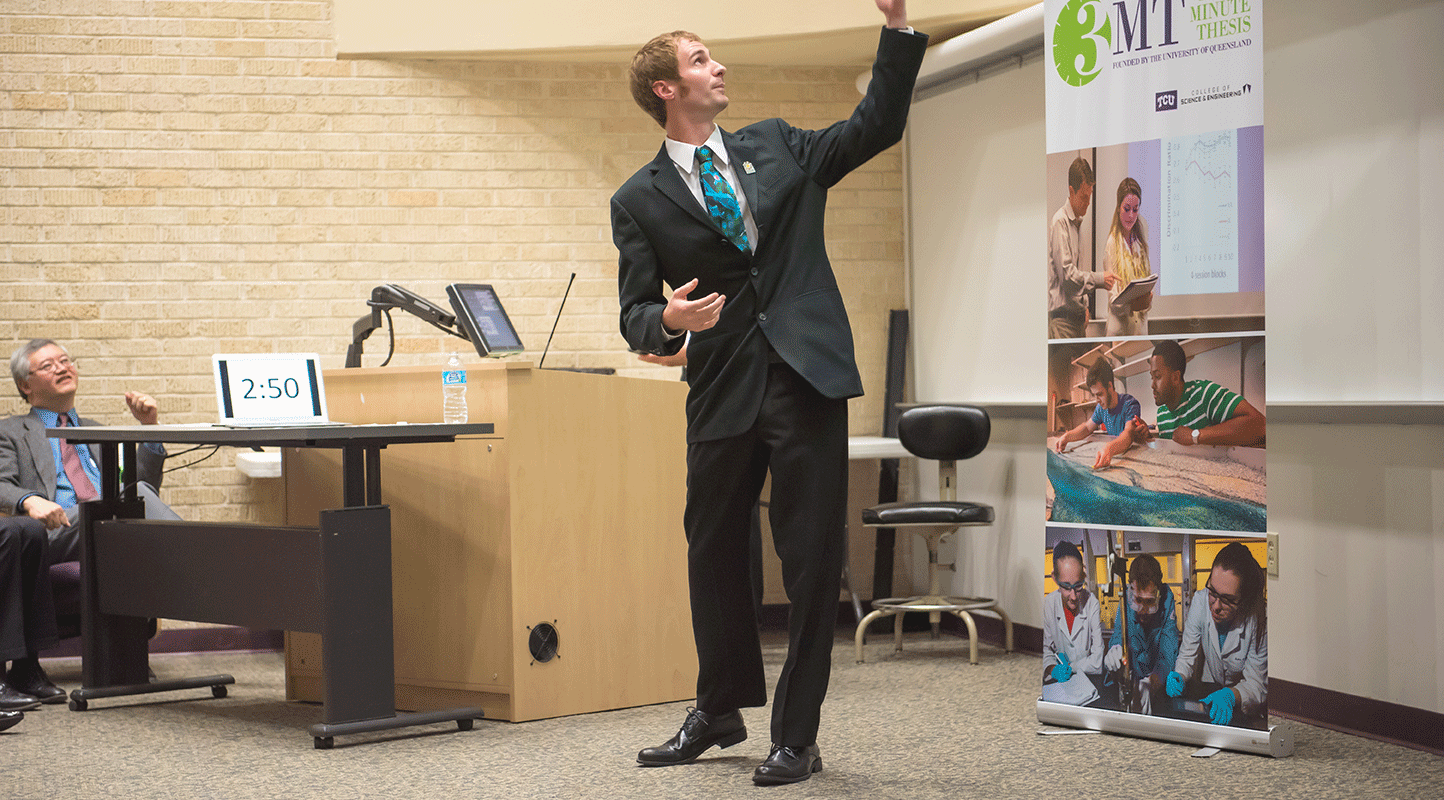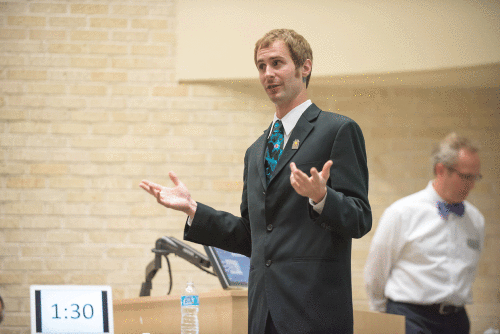
Jargon is Jibberish
College of Science & Engineering joins a growing number of universities asking student researchers to articulate their work in layman’s terms.
Physics doctoral student Joe Kimball stood in front of the lecture hall audience and exhaled. He had 180 seconds to describe his research on fluorescence/optical spectroscopy.
In a lightning-fast presentation, called “Finding Waldo Easily for Early Detection of Diseases,” Kimball explained that a new excitation method in fluorescence imagery works like flash photography and helps pinpoint markers for cancers and other ailments at the earliest stages.
The doctoral student’s speech happened during the finals of the inaugural College of Science & Engineering Three-Minute Thesis competition. In the audience were Kimball’s mother and his research adviser Karol Gryczynski, W.A. “Tex” Moncrief Jr. Chair and professor of physics.
Kimball’s research presentation wasn’t just about the science. It was personal. His grandmother died from a cancer that he hoped one day to help prevent. “I think this research is exciting,” he said. “It was thrilling to present it with more than a poster.”

Joe Kimball, TCU doctoral student in physics.
Started at the University of Queensland in Australia, the thesis competition limits presenters to one slide and a three-minute explanatory speech. In April, TCU joined a growing number of universities replicating the format.
“The key is for students to communicate a ‘complicated’ message about science in layman’s language, while at the same time conveying why their research could be important to their audience,” said Magnus Rittby, senior associate dean in Science & Engineering who organized the CSE competition after studying at the Alan Alda Center for Communicating Science at Stony Brook University.
“The idea is to help students in the sciences prepare for job interviews and media training, as well as the competition,” said Rittby, who adapted a series of interactive workshops called “Jargon is Jibberish” that focus on explaining complex topics and connecting with an audience through storytelling.
In the inaugural competition, more than 20 student researchers participated in preliminary rounds before the field narrowed to six finalists. Science & Engineering is scheduled to host its second competition in November and plans to send its top presenters to national and international events.
“Often times, scientists are unfairly viewed as lab-bound hermits,” Rittby said. “The competition pushes them to expand their skill set and communicate effectively the research they’re conducting. That is critical because the science is much more powerful when it is understood broadly.”
Kimball agreed. “Science explains the natural world, and that impacts everyone, the whole planet. [As scientists], we ought to be able to relate this research,” he said.
There are incentives for the researchers as well, said biology graduate student Amy Hardy, who was runner-up to Kimball in the inaugural competition finals with a presentation called “Can the Common Cold Set the Stage for Alzheimer’s?”
“I enjoyed the Three-Minute Thesis program and feel it is a great way for preparation for a career involving public speaking, as well as grant acquisition,” she said.
Rick Waters ’95 contributed to this report.

Your comments are welcome
Comments
Related Reading:
Campus News: Alma Matters
From Application to Admission
Amid an increasingly selective admission process, Heath Einstein leads the team that builds the TCU community of the future.
Campus News: Alma Matters
From the Chancellor
Chancellor Victor J. Boschini, Jr., identifies what made TCU and its sesquicentennial so memorable.